From yesterdays inspection. 8 Year old system failed!!!
Back up through the tank cover while conducting the flow test.
Another good reason to dig up the tank and pull the cover. Both the inlet and outlet baffles are covered and not visible.




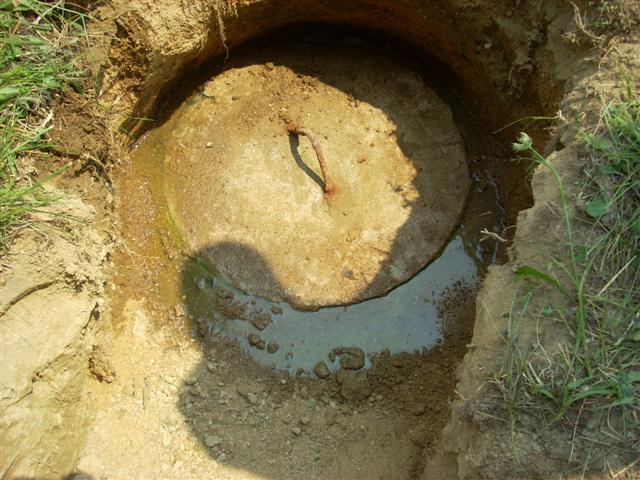
From yesterdays inspection. 8 Year old system failed!!!
Back up through the tank cover while conducting the flow test.
Another good reason to dig up the tank and pull the cover. Both the inlet and outlet baffles are covered and not visible.





Another failed system, backed up during the load test. Luckily the homeowner was able to get a pumping company out there and pump the tank.
Turns out the outlet baffle filter was clogged.
In the state of Maine if you want a garbage disposal and your on septic you can add a filter to the outlet baffle, problem is they need to be cleaned every year. Who does that!!!
In New Hampshire if you want a garbage disposal you need to increase the treatment tank size by 50%
Good information Peter. 
Thanks Marcel, I’ve been meaning to call you this week but things got a little crazy.
I’ll catch up to you some night this week.
Thanks Pete, I am home usually at 5:00. 
Yesterdays inspection. 24 year old stone and pipe system. I couldn’t believe the condition of this system, it looked great. However, I dug up the D-Box and found that over the years water and soil have penetrated through the cover and a layer of sludge has built up in the bottom and the outlet cover for the tank was broken.
Started to run some water in the basement laundry utility sink and when I checked the treatment tank no water was coming into it. Saw the drains go through the floor and decided to investigate. Found the discharge pipe about 40 feet from the house dumping the laundry room waste into the woods, and this is conservation land!!!
Another good reason to find and dig up the D-Box
Over all a good system but needs, tank cleaned with sludge removal and new cover, replace D-Box, re-plumb laundry so it goes into the sewer system.




Very informative…thanks, Peter.
Inspection and maintenance is key to ensuring that septic systems function properly. This free online course is for everyone with an interest in inspecting and maintaining functional onsite wastewater (septic) treatment systems.
This training course describes two types of inspection that can be performed by properly trained inspectors:
The routine maintenance inspection is well suited for a residential home inspector. A maintenance inspection is used to located system components, describe how the system functions, and how it can be maintained regularly. The functional inspection is used primarily during property transfers, includes a maintenance inspection, and designed primarily for septic contractors.
Your welcome Larry.
I should also note that this system passed with flying colors a couple of months ago when another inspector looked at it. He looked at the tank and ran some water through the system, he even used the laundry to do it, and missed the fact that it discharges into the woods.
How lucky for him the deal fell through. If his buyer purchased this house and discovered the B-Box was about to clog and the other problems he would be buying a new septic system. So, if your going to inspect septic systems, do it right and dig them up!!!
Ben, I took INACHIs course before taking the Granite State Designers and Installers course and your material was very close and NH has some of the best training in the country.
Here is a recent inspection of a dry well system. Home was built in the 1960s. A permit search revealed the dry well was replaced in 1983, (without state approval) and is now in failure. Didn’t even get to the cover before it filled in my inspection hole.

What NH calls a dry well is basically a pit with gravel?
For the most part. Usually there is a treatment tank and then the dry well. Some older dry wells were basically 55 gallon steel drums with hole punched in them.
Dry wells are the early form of a leach bed or EDA.
Most from the 60s are concrete blocks stood on end in the shape of an octagon. The bottom and outside perimeter was backfilled with stone. Problem with these type systems is they require greater height above the water table.
These systems were the basis for the stone and pipe systems that came later.
Greg, who do you use for the septic insp’s in Brevard County, FL?
Yesterdays inspection of a 35 year old stone and pipe system. EDA was overgrown as usual and small roots were penetrating the D-Box. Once uncovered the D-Box and laterals looked good. After digging two inspection holes in the EDA and completing a load test the system was found to be functioning as intended with many years of service still ahead of it.
Note the staining on the sewer laterals leaving the D-Box. No flooding or back up are evident. Had th EDA flooded and backed up into the D-Box the staining would show higher up inside the lateral.



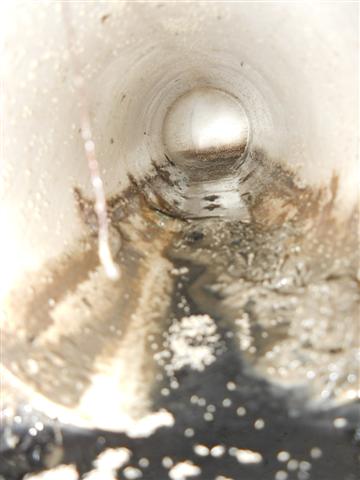
Before I moved from PA to CO, I fixed my septic system.
We pulled a metal tank. I almost built my shed on top of it. The tank actually degraded completely away.
Now, the ‘field’ was actually a hand-dug, deep, hole, and laid with block around 1970. It’s cap was covered by a 50-ft tree.



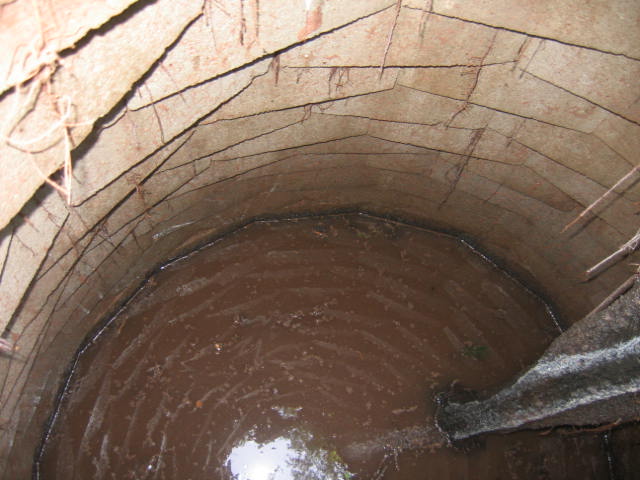
Nice picture of a dry well Ben.
I had the same thing only made out of brick under my driveway. I parked my truck on top of it every night for 10 years and didn’t even know it was there.
Here’s one from the other day. Permit search revealed the system was replaced in 1988 and is a non-engineered, home owner installed system.
Tank has not been pumped in years.
Covers to tank are broken.
D-Box is completely deteriorated and has collapsed upon it’s self,
I was able to clear enough dirt/sludge out of it to continue my evaluation but the system needs upgrading.
2500 square foot addition added to the home, new master bedroom suite with new master bath including and Jacuzzi.
No inspections were every completed by the town and there is no certificate of occupancy. Town is aware of this home and now that I have disclosed this information to the listing agent/ bank I’m not sure what will happen. ATJ wants this house inspected and a C/O issued. REO/bank owner and my client walked.



Another good reason to open the D-Box during a New Hampshire or Maine septic inspection.
Had the you know what scared out of me today when I pulled the cover off and found this. The screen is missing off the end of the vent and I think he was storing his acorns in the drain line.


Below is an excellent example of a typical drywell that is found during a New Hampshire septic inspection.
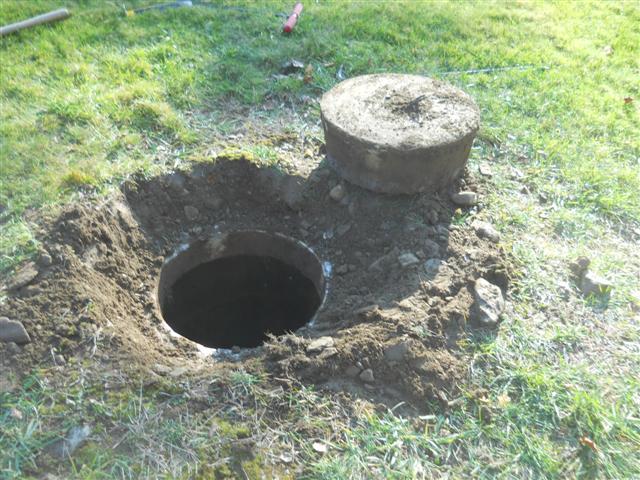
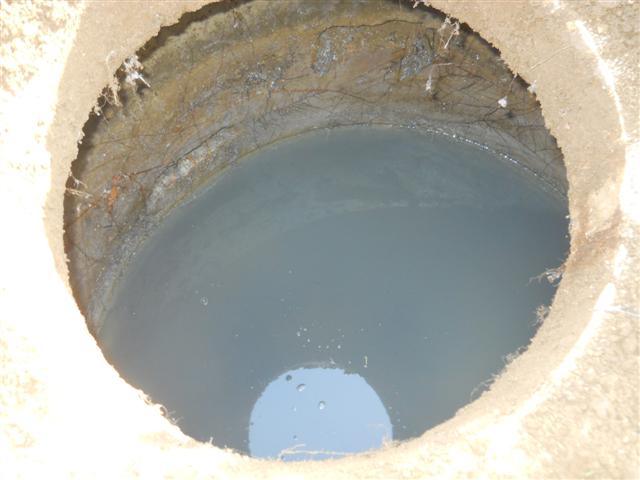


Here’s a New Hampshire septic inspection from the other day that failed.
Obvious signs where observed when the covers were removed. Prior back up into the D-Box from the EDA, note the staining on the back side of the cover. Effluent was almost half way up the sewer laterals. Two inspection holes were dug in the EDA and standing effluent was observed.




